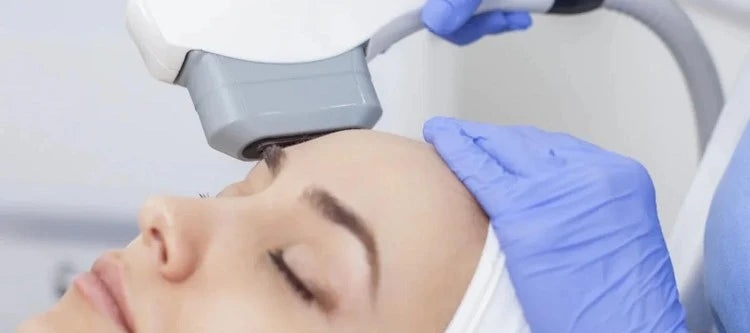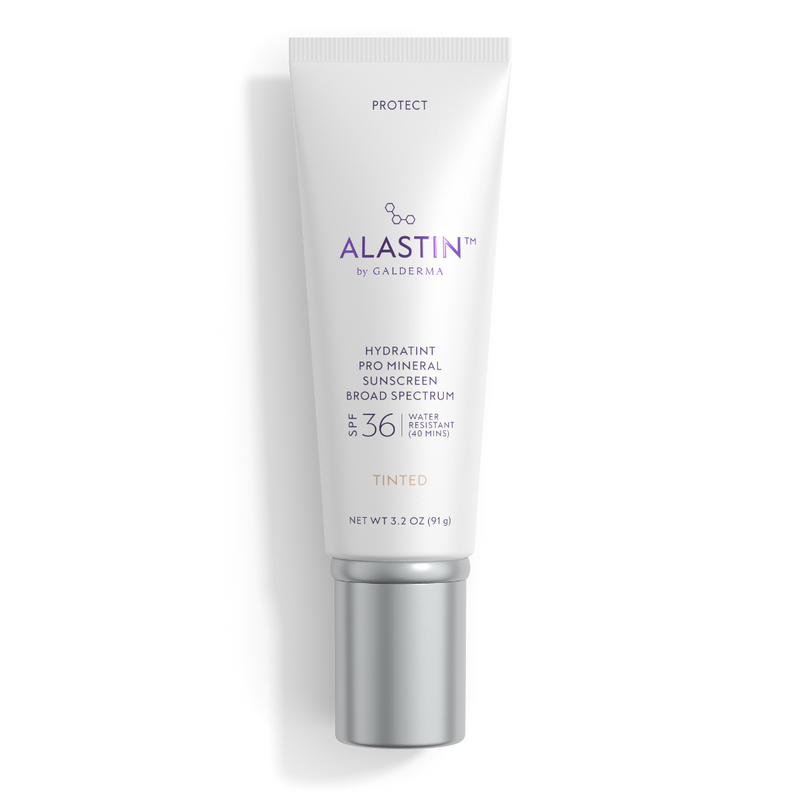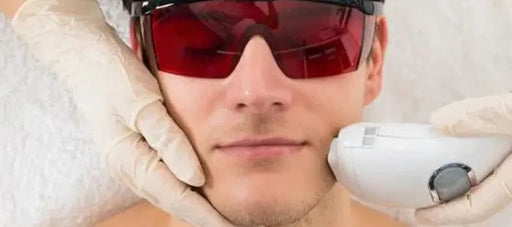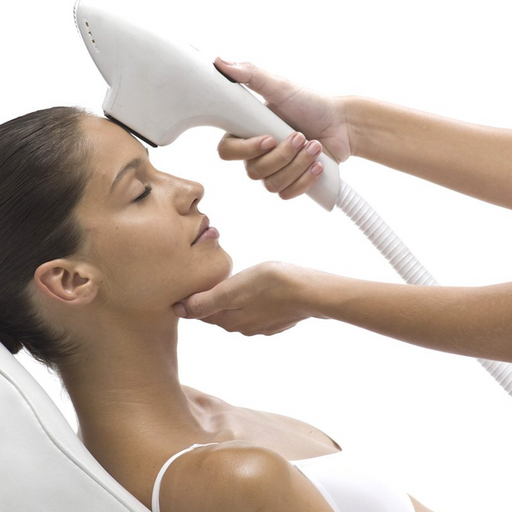You have no items in your bag
How to Prepare and Care for Your Face When Having Laser Treatments

Beauty queens from across time and space have sung it for centuries: when it comes to beauty, no pain, no gain. But when it comes to laser treatments, pretty should only hurt for a short time and can be minimized with the proper pre- and post-treatment skincare routine.
But what is the best way to prep and care for your face when you get a laser treatment?
This guide will take you through the ins and outs of prepping your face for optimal laser results, and will show you how to take care of your face after laser treatment for fast healing and comfort.
How Laser Treatments Work
The two main types of aesthetic laser treatments are laser hair removal and skin resurfacing. To grasp why conditioning your face before a treatment is vital, you first have to understand just how intensive they can be.
Here’s a quick rundown of the main types of facial laser therapies you may be considering:
- Laser Hair Removal – This process uses a laser to damage hair follicles and delays unwanted hair growth in certain areas. It often takes several laser appointments to maintain the desired results.1
- Skin Resurfacing – This is especially good for tackling those deep, stubborn wrinkles and scars that just won’t go away. At its core, skin resurfacing lasers create controlled heat induced injury to skin to promote collagen growth. The increase in collagen production then results in a smoother complexion. Skin resurfacing comes in two forms, which are:
- Non-Ablative – This procedure does not create wounds on the skin's surface. Instead, it simply heats problem areas beneath the surface to promote collagen growth for improved skin texture and tone. While this method takes more treatments to make an impact on your skin goals, it does boast faster recovery times.
- Ablative – This laser treatment is the most invasive kind—however, that also makes it the most effective. It actually wounds the skin by removing the epidermis (outer layer), while heating and slightly injuring the dermis (middle, or underlying layer), to stimulate healing and collagen production. While this seems scary, the dermis and epidermis’s healing process leaves skin smoother and tighter than ever before.2
The main differences between ablative and non-ablative lasers are their recovery time, level of invasiveness, and effectiveness. Because ablative lasers are more intensive, they require more downtime to heal. Non-ablative lasers are less invasive, which reduces your recovery time.
However, the deeper the laser goes, the more results you’ll see.
For example, it would take between 4-6 non-ablative treatments to achieve the same results as just 1-2 ablative procedures. So even though you’ll need more downtime, you’ll need fewer treatments.
Fractional Lasers
When you go to a laser treatment specialist, more often than not, they will recommend using a fractional ablative or fractional non-ablative laser treatment. Fractional lasers meet the skin in a distinct pixelated pattern. This causes tiny holes to be created in the skin, which helps the skin heal faster.
Another reason dermatologists prefer fractional lasers? Fractional lasers reduce downtime, they tend to be safer, and they have more predictable results than non-fractional lasers.
Types of Skin Resurfacing Procedures

Once you identify what your skin concerns and goals are, your provider will work with you to determine which laser is best for you—not only for optimal results, but based on your lifestyle and budget as well. Different types of skin resurfacing treatments target different problem areas using unique methods of laser frequencies, area coverage, and pulses.
Here’s a breakdown of some of the most popular ones in the industry:
- Ablative Fractional Carbon Dioxide (CO2) – This ablative laser resurfacing procedure pokes tiny holes into your skin to tackle acne, scarring, age spots, wrinkles, fine lines, and uneven pigmentation on the deepest level possible 3 —it not only smooths pigmentation but helps regenerate tissue that was once lost to acne. Because this treatment uses ablative lasers, it requires more downtime than a non-ablative laser. However, you’ll need fewer treatments to see results.
- Non-Ablative Fractional Lasers – The power of a fractional laser with a fraction of the downtime! Non-ablative fractional laser skin resurfacing is a technique that uses a unique laser to clear away layers of skin. It’s ideal for minor skin blemishes, fine lines, light scarring, and dark spots.
- Erbium Fractional Laser Resurfacing – Erbium laser resurfacing treatment helps to remove surface-level and moderately deep lines and wrinkles. This particular treatment causes fewer side effects, like swelling, bruising, and skin redness. That means your recovery time will be much faster than other treatments, including Fractional C02 treatments. In fact, recovery may only take a week.4
A Note on Energy-Based Treatments
Not all skin resurfacing treatments require a laser. These skin beautification techniques use alternative sources of energy to blast away imperfections. Take a look at some of the more popular energy-based treatments:
- IPL – Intense Pulsed Light (IPL) treatments are not technically laser treatments. However, skin specialists use a laser-like device to shine powerful light onto the skin, encouraging collagen growth and skin regeneration. This treatment primarily targets pigmentary issues such as sun or age spots by hitting the melanin in these areas with short light pulses to improve complexion and reduce discoloration.5
- Ultrasound Therapy – Ultrasound therapy uses the power of sound to improve the look of loose or sagging skin. Ultrasound energy is focused below the skin’s surface to stimulate collagen production and give skin elasticity and lift.
- Microneedling with Radio Frequency – Microneedling gets a radio-powered boost in this treatment. Specialists use a dermaroller to prick your skin with teeny tiny needles. With the help of radio frequency, those needles are heated to boost collagen growth. Microneedling with Radio Frequency helps to remodel, tighten, and smooth the skin.
Preparing Your Skin Prior to the Procedure
Whether you’re going in for an IPL treatment or laser skin resurfacing procedure, you should never overlook the importance of prepping your face a few weeks before walking into your doctor’s office.
Pre- and post-treatment care helps reduce the recovery time associated with laser procedures, which can sometimes be quite long. With the right skincare and a good dose of mindfulness, you will protect your skin and enhance your laser therapy’s cosmetic results.
To improve your overall laser treatment experience and treatment outcome, follow these tips to prep your skin before your appointment (please consult your healthcare provider for best practices specific to you):
- Avoid Sun Exposure – Sun damage before a laser treatment can lead to more damage, increased sensitivity, and irritation. You need to avoid exposure to UV rays altogether at least one week prior. UV radiation would exacerbate the darkness of age spots or scars, which gives the lasers more work to do! So laying out in the sun up to two weeks before your procedure wouldn’t be the best idea.
Another reason to stay out of the sun before your treatments? Dermatologists will rarely use a laser treatment on someone who’s had a tan. So say no to tanning beds and damaged skin!
- Stop Messing With Your Skin – For at least three weeks before treatment, pause all tweezing, waxing, and chemical epilation.6
- Avoid Other Procedures – Never schedule a laser treatment directly after undergoing a chemical peel, laser hair removal, or laser skin resurfacing in that area.
- Use the Right Products – Pre-conditioning your skin before any laser treatment is vital for protecting that beautiful face of yours and promoting optimal results from your procedure. Start applying our Regenerating Skin Nectar with TriHex Technology® about two weeks before your procedure. Multiple clinical studies have shown that this product can do wonders to amplify the results of a laser treatment.
This unique formula clears away any old and brittle collagen and elastin to make way for the good stuff. Its peptides and botanicals are designed to support the skin to clear out valuable real estate for better, healthier collagen and elastin.
How to Take Care of Your Face After Your Laser Treatment
No matter what, your skin will probably be sensitive for several weeks following your procedure. That’s because laser treatments, in essence, injure the skin—but in a targeted way. Laser treatments work because they promote smooth and even healing of these injured areas. Post-procedure care is essential for preventing changes in pigmentation, scarring, or nasty infections.
Post-procedure care can vary, depending on the procedure and your skin—always make sure to follow your healthcare provider’s instructions specific to you. To maintain and enhance your laser treatment results, reduce recovery time, and prevent side effects, these are the general tips to follow after the laser hits your skin:
What to Avoid:
- Physical exfoliants, which can cause irritation when the skin is at its most vulnerable.
- Vitamin serums, like Vitamin C (ascorbic acid), may be irritating to your skin. It’s best to take a break from any vitamin serums you’ve been using, just to be on the safe side.
- Chemical exfoliants, like glycolic acid-laced peels and fruit enzymes (even the most gentle!). Straying away from these is a great way to stop itchiness after laser resurfacing.
- Scented lotions, cleansers, and serums because they can also cause redness and irritation.
- UV exposure at least one week after treatment.
What to Use on the Skin (and When):
- Immediately After – Right after treatment, the skin is at its most vulnerable—the epidermis needs to be supported to heal. Use our Regenerating Skin Nectar with TriHex Technology® to promote faster recovery and reduce downtime. Always use as directed by your healthcare provider.
-
Within a Few Days Post-Treatment – Be sure you’re slathering on a high-quality, broad-spectrum sunscreen that’s SPF 30 or higher to avoid sun damage and discoloration. To avoid contact with damaging chemical SPF products that could still hurt sensitive skin, make sure your sunscreen is mineral-based, like our HydraTint Pro Mineral sunscreen.

-
Once Your Skin Has Healed – This is the moment you’ve been waiting for! Your skin should be healed and gorgeous, especially if you’ve followed the previous skincare steps. You can now transition to a daily serum, such as our Restorative Skin Complex because your skin needs hydration, maintenance and to continue to strengthen the skin to promote the regrowth of new, healthy collagen and elastin.
Pre- and Post-Laser Treatment FAQ
If these savvy skincare tips haven’t yet answered all your questions, here are some frequently asked questions—and their answers—to satisfy all your post-treatment curiosities.
Can I wash my face after my laser appointment?
Your healthcare provider will give you specific post-care instructions but they’ll most likely apply a recovery balm after your treatment. Wear a protective covering within the first few hours after you’ve left your doctor’s office. After that, you just have to wait until the next morning (at least 12 hours after) to wash your face. Avoid scalding water—tepid is best—and only use a gentle cleanser as recommended by your doctor.7
How long does it take for my skin to heal after a laser treatment?
Recovery time depends on the type of procedure you underwent, whether you prepared your skin prior to treatment, and how you’ve been taking care of it since. But in general, the recovery times are as follows:
- Ablative Fractional CO2 Laser Resurfacing Recovery Time – Up to 2 weeks
- Erbium Fractional Laser Treatment Recovery Time – 7-10 days
- Non-Ablative Fractional Laser Resurfacing Recovery Time – 1-3 days
Depending on the intensity of your treatment, your skin may be pink or red for anywhere between a week to a month. Just take special care with your post-treatment routine and you’ll be radiant in no time.
Can I use my current skincare products for recovery?
Ideally, you should not use non-medical grade cosmetics during your recovery. Your skin will be extremely sensitive for weeks—or even months—after your procedure, so your best bet is to use products specifically designed for skin before and after a laser treatment.
All in all, investing in medical-grade skincare is worth it.
Go All-in With ALASTIN
If you want to dive head-first (or, in this case, face-first) into pre- and post-procedure skincare, commit to a brand that’s committed to you. With science-backed products loved by doctors and the media alike, we offer top-of-the-line skincare.
Whether you need unbeatable products to prepare for a specific procedure, or just want to get the best skincare possible for your daily routine, order online or find a local provider to take your skincare to the next level.
Sources:
1. Mayo Clinic. Laser hair removal. https://www.mayoclinic.org/tests-procedures/laser-hair-removal/about/pac-20394555#:~:text=During%20laser%20hair%20removal%2C%20a,or%20delays%20future%20hair%20growth.
2. Mayo Clinic. Laser resurfacing. https://www.mayoclinic.org/tests-procedures/laser-resurfacing/about/pac-20385114
3. Schweiger Dermatology Group. Fractional CO2 Laser. https://www.schweigerderm.com/cosmetic-dermatology/laser-treatments/fractional-co2/
4. Schweiger Dermatology Group. Fraxel Laser. https://www.schweigerderm.com/cosmetic-dermatology/laser-treatments/fraxel/
5. Schweiger Dermatology Group. Intense Pulsed Light for Acne Scars. https://www.schweigerderm.com/cosmetic-dermatology/laser-treatments/intense-pulsed-light/
6. Simplicity Laser. Laser Hair Removal Pre- & Post-Treatment Care. https://www.simplicitylaser.com/pages/laser-hair-removal-pre-post-treatment-care
7. Epione. What to Expect. https://www.epionebh.com/laser-resurfacing-after-care-instructions/
Spotlyte. Experts Explain Exactly What to Use on Your Skin After Laser Treatments. https://thespotlyte.com/1122155/best-products-to-use-after-laser-resurfacing-treatment/

$84.00
$258.00
$220.00











